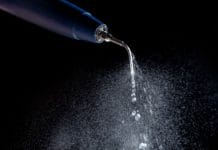In The Female Brain, a man’s neurological reality slowly wears down over time while a woman’s brain is erratic. The author of the 2006 book, neuropsychiatrist Dr. Louann Brizendine, wrote, “His is like a mountain that is worn away imperceptibly over the millennia by glaciers, weather, and the deep tectonic movements of the earth. Hers is more like the weather ‒ constantly changing and hard to predict.”1
The hormonal changes men and women experience as they age are similar yet quite different. During andropause, men are still fertile. The hormones decrease gradually and take years for symptoms to occur, affecting some men who have low testosterone. During menopause, women become infertile. Hormones decrease significantly and, within a time frame, affect all women.
The dental hygienist needs to remain aware of potential oral health issues that arise when menopausal symptoms occur. In addition, low testosterone in men can influence oral health too. Beyond reviewing gender-based hormonal changes, this article will also review concerns that dental hygienists can address with patients.
Menopause
Estrogen in women is the most dominant hormone; therefore, it plays a significant role within the body. It’s a key player in the functions of the reproductive system and female sex characteristics. According to The Female Brain, estrogen is the powerful, in control, all-consuming, and sometimes business and sometimes seductress with a close relationship with the brain’s neurotransmitters ‒ serotonin, dopamine, norepinephrine, and acetylcholine.1
Progesterone is next in line with estrogen and provides intermittent chaos. Sometimes it’s a storm reversing estrogen effects, and sometimes it’s mellowing by releasing allopregnanolone (soothing, sedating hormone).
Testosterone’s role in women is assertive, fast, all-consuming, focused, aggressive, unfeeling, and no time for affection.
Estrogen, progesterone, and testosterone are mainly produced in the ovaries. When the ovaries age and no longer have their main ovulation functions, it atrophies and decreases hormones. The decrease of the main hormones shifts a women’s body into a sequence of events:1
Perimenopause ‒ Perimenopause is the erratic cycling of estrogen, progesterone, and testosterone hormones. Perimenopause can cause irregular sleep, irritability, moods, depression, joint pain, increased fatigue, and hot flashes. With the brain becoming less sensitive to estrogen, symptoms may become more pronounced and variable on a daily, monthly, and yearly basis.
With decreased estrogen and stress sensitivity in the brain, emotions and rationality become unstable. During perimenopause and the change in the brain, a women’s daily life’s purpose can become surviving and just getting through the day with the emotional ups and downs. This phase of life correlates with being calm one minute, angry the next, and then crying.
The transition from perimenopause to menopause and the lowered production of estrogen sequentially trickle down to produce less of the feel-good neurotransmitters mentioned above. With this transitional event, depression, anxiety, sleep deprivation, weight gain, lack of mental focus, and patience are many conditions that were never experienced prior.1
While hot flashes are the initial signal of estrogen withdrawal, the brain’s response to glucose changes contributes to energy surges and drops with more cravings for sweets and carbs.2 Increased cravings for sweets and carbs can increase opportunities for dental caries.
Women may be taking medications such as an antidepressant, anti-anxiety, and estrogen replacement for these symptoms. As we know, antidepressant and anti-anxiety medication may lead to bruxism and xerostomia.
Perimenopause lasts an average of four years but could be up to 10 years and stops at the start of menopause. Coming out of perimenopause and into menopause, the brain starts to adjust to low estrogen and levels off with the symptoms in most women. This transition into menopause promotes metabolism changes and mid-section weight gain.2
Menopause ‒ Menopause marks the end of the menstrual cycles and fertility for women. Beginning in a woman’s thirties, the decrease in the production of estrogen and progesterone begins and steadily declines into the forties and fifties with the end result of infertility.
Brain circuits fueled by estrogen, progesterone, and oxytocin (nurturing, serving, and affectionate hormone) decline. In women, an increased interest in well-being, staying healthy, and new challenges may arrive. Within the first five years of menopause, the woman’s brain declines quickly with cognitive functions and short-term memory.1
Brain cells, circuits, and neurochemicals that relied on estrogen shrivel up. Estrogen influences brain function, mitochondria, and blood vessels. Estrogen helps blood flow to the brain and lessens shrinkage in the areas important for concentration, judgment, decision-making, verbal and emotional processing, and listening skills. Studies have shown that after the five-year mark without estrogen, the preventive effects on the heart, brain, and blood vessels have gone (This is why hormone replacement therapy is important for some women).1
Many symptoms include sleep problems, weight gain, slowed metabolism, thinning hair, dry skin, and other physical changes. Menopause increases the risks of cardiovascular disease, osteoporosis, lowered libido, depression, anxiety, joint pain, and periodontal disease.3 Some reasons behind these risks include:
- Libido: By age 50, women tend to lose up to 70% of testosterone, which influences their sex drive.
- Cardiovascular: Estrogen helps with keeping HDL adequate and LDLs low, and maintains blood flow. Plus, women tend to gain weight.
- Osteoporosis/periodontal disease: Slows down bone rebuilding.
- Anxiety/depression: The brain becomes more sensitive to stress. Changes in estrogen disrupt serotonin cells.
- Joint pain: Estrogen protects joints and reduces inflammation.
Postmenopause ‒ Postmenopause is the final stage in this sequence of hormonal events. Where menopause is considered at the one-year mark after the last menstrual cycle, postmenopause follows that process to the end of life. The body starts to function from a decrease in estrogen, testosterone, and oxytocin.
Postmenopause creates calmness and a lessened reaction to stress and emotions. With this new calmness, a woman’s interest changes from nurturing others to her own interests and fulfilling her own needs.1
Menopause and Oral Health
Drastic hormonal fluctuations during menopause may cause oral alterations. Hormonal changes can also lead to medical conditions such as cardiovascular disease, increased blood sugars and pressure, and osteoporosis. Medications may be taken due to these medical conditions, which may cause xerostomia, dysgeusia (altered taste), greater sensitivity to hot/cold foods and beverages, and burning mouth syndrome.4-7
Osteoporosis and jaw shrinkage: The decline in estrogen may cause loss of bone density, which may include the decreased density of the alveolar bone. Normal bone turnover is impaired by estrogen deficiency, enhancing osteoclastic resorption activity and decreasing osteoblastic activity.
Trigeminal neuralgia: The unilateral facial pain along the trigeminal nerve is possibly caused by the deterioration of the protective sheath around the nerve or compression of the nerve. The patient may confuse this with a toothache. It starts as attacks for days or weeks with remission phases, but it can worsen over time and become disabling.
Mucosal disorders: Decreased estrogen thins the oral mucosa, which may lead to increased risk of inflammation and clinical attachment loss. With the risk of mucosal changes, other disorders may develop, such as gingivostomatitis, lichen planus, candidiasis, angular cheilitis, benign pemphigoid, pemphigus vulgaris, and Sjögren’s syndrome. In addition, mechanical trauma may easily cause oral lesions, ulcerations, or abrasions.
TMJ: Lowered estrogen may increase inflammation, causing changes in bone rebuilding and repair.
Xerostomia: Correlated with menopause is the drop in estrogen, which dries out the mucous membranes in the body, including the mouth. This may be a transient issue but can provoke dental caries, infections, mucositis, pain, dysgeusia, halitosis, and dysphagia. This also can cause difficulty with dentures and partials if applicable.
Burning tongue syndrome: Hormonal imbalance causes burning tongue syndrome. It comes and goes with flare-ups.
Chronic ulcers: Menopausal phases can cause fatigue and compromised immune system function, allowing mouth ulcers the opportunity to develop.
Periodontal disease: Low estrogen plays a crucial role in bone loss and inflammatory processes, leading to a risk of bleeding, inflamed gingiva, gingival recession, and bone and tooth loss.
Dysgeusia: Low estrogen levels cause the receptor proteins on taste buds to lose their functionality as well as the increased activation of the pain neurons when the taste buds are damaged by lowered estrogen.
Candidiasis: Mucosa contains estrogen receptors, and alterations with estrogen increase the risk of candidiasis. If diabetes is present, the sugar in the saliva increases candida growth.
Hormone Replacement Therapy
Hormone replacement therapy (HRT) can help with dental issues by maintaining estrogen and progesterone levels. Estrogen helps with menopause symptoms, and progesterone helps with uterus health. Hormone replacement therapy can be estrogen or progesterone solo or combined and consists of different forms: gel, spray, patches, or tablets.
This therapy helps reduce osteoporosis, cardiovascular disease, cancers, diabetes, dementia, and osteoarthritis.
Postmenopausal women who have osteoporosis and periodontitis commonly have a more sensitive response to oral pathogens, which may cause more bleeding, decreased dentoalveolar bone height, and decreased bone mineral density of the crestal and subcrustal bone. HRT has been shown to reduce the risk of periodontal disease, gingival inflammation, and clinical attachment loss.8
Andropause
Andropause is close to a man’s physiological version of a woman’s menopause. It is also referred to as “male menopause,” “late-onset hypogonadism,” “viropause,” “puberty in reverse,” and “male climacteric andropause.” The term “midlife crisis” is often associated with andropause because the hormone changes affect physiological, interpersonal, social, sexual, and spiritual life.
As men age, testosterone and androgen production decrease, the body makes less testosterone, and the sex hormone-binding globulin (SHBG) increases and pulls usable testosterone from the blood. This uneven ratio causes SHBG to bind available testosterone from the circulating blood, leaving the body’s unbound testosterone (bioavailable testosterone) to use. Men experiencing andropause have lowered amounts of bioavailable testosterone in their blood, therefore less for the body to use, causing various physical and mental changes.9
According to Dr. Brizendine’s book, The Male Brain, testosterone is the king of hormones for men. Testosterone’s primary function is to maintain the male reproductive tissues and the male sex characteristics.
Testosterone’s contribution to a man plays a dominant, aggressive, and powerful role in the body. It is used for focus and goal orientation and provides the trait of the compulsion to outrank other men in the pecking order. Testosterone drives the libido and aggression circuits, along with the single–mindedness of competition and pursuits. It’s even dominant in its bravery, confidence, physicality, moods, and irritability. Testosterone also is a contributor to the masculine sweat glands that give the smell of manhood; these pheromones are released from the hormone androstenedione.
Vasopressin is the hormone that enhances masculinity and is involved with gallantry, monogamy, and aggressively protects and defends his turf, mate, and children. Areas in the brain fueled by testosterone and vasopressin decrease while the ratio of estrogen to testosterone increases during andropause. In addition, oxytocin increases; oxytocin is the hormone for calming, such as a father bonding with his infant, as well as empathy, trust, and romance; it promotes safety and security and the “postcoital narcolepsy.”10
Testosterone influences bone mass density, muscle growth and mass, red blood cell production, increased strength and endurance, hair growth, a deep voice, memory function, and improved mood. Andropause happens when middle-aged men have signs and symptoms of declined male hormones, which are associated with depression, loss of libido, sexual dysfunction, increased abdominal fat, thinning hair, and loss of muscle mass tone. This happens slowly over time and is a steady reduction of testosterone and dehydroepiandrosterone (DHEA). Produced from the adrenal glands, the body turns DHEA into testosterone (or estrogen) and is used for improved bone density, depression, body composition, and overall health.
The loss of testosterone can occur in men beginning at age 35 and then 1% to 1.5% of testosterone loss each year after that. About 25 million American men between 40 to 55 years of age experience a degree of andropause. Thyroid growth and DHEA hormones begin to decline during their twenties and usually start showing symptoms by their thirties. By eighty years of age, most male hormone levels decrease to pre-puberty levels. While the man’s libido has declined, he is still fertile and can father children.
In andropause, men’s interests will shift to more family than career, staying healthy, and relationships. With more oxytocin, estrogen, and less testosterone than ever, men become more affectionate and sentimental.10
Again, as testosterone loss take years before symptoms show, the first subtle signs of decreased testosterone are declined energy levels, mood, cognitive and physical performance, and increased irritability. As with other health issues, be aware that these symptoms can mimic other conditions.9
Oral Health Concerns
Testosterone stimulates the development of bone, muscle, fat metabolism, skin, and male health. It increases cardiovascular conditions, insulin resistance, and osteoporosis with increased fracture risks when it becomes low with aging. These conditions can increase medication use. Side effects of andropause or medications are oral health risks or medical emergencies.
Oral health complications of andropause are associated with:
- Xerostomia: Medication driven.
- Diabetes: Lowered testosterone decreases glucose uptake and metabolism.
- Temporomandibular joint osteoarthritis: Lowered testosterone decreases bone production and increases inflammation risk.
- Increased alveolar bone loss: A risk of low testosterone is the accelerated bone turnover and the domination of bone resorption.
- Periodontitis: Testosterone tends to be anti-inflammatory while estrogen tends to be pro-inflammatory, so the shift of balance of these hormones increases inflammatory responses.
- Osteoporosis: Decreased testosterone may lead to a loss of bone density, mass, and formation.11
Testosterone Replacement Therapy
Testosterone replacement therapy can ease symptoms, improve quality of life, and improve muscle mass, bone density, libido, stamina, and cognition. It also lowers the risk of cardiovascular disease, osteoporosis, and periodontitis.
Panoramic Radiograph Benefits
Staying up to date with the panoramic radiograph to evaluate and monitor mandibular bone density and thickness is important for this niche of patients. If the jaw shows signs of osteoporosis, I would mention it to the patient for a medical evaluation. With a deficiency in estrogen and testosterone during menopause and andropause and the increased risk of osteoporosis, the panoramic radiograph can be very beneficial. In andropause, bone mass, density, and formation decrease are common. With menopause, bone resorption is the fastest within three to four years after menopause.
Mandible bone health is definitely a longer subject to talk about, but there are a few things to be aware of when looking at a panoramic radiograph for osteoporosis. The mandibular alveolar process is one of the quickest areas of the body for bone turnover. The alveolar bone around the molars, where the greatest biting force is placed, is generally denser than around the premolars or canines. The bone is distributed to the most loaded sites to fortify where the bone is most needed. If trabeculation is sparse in those areas, it could mean bone formation is impaired and increases the risk of osteoporosis.
In women, the alveolar bone is most dense in a healthy jaw and more porous in osteoporosis. During perimenopause, the alveolar process decreases the most, especially in the buccolingual dimension, which is likely caused by the periosteal resorption.
The mandibular cortical index is the most used evaluation of osteoporosis in the mandible. Compact bone lying distal to the mental foramen is determined through:
- Normal cortex: Having a relatively even endosteal margin.
- Moderately eroded cortex: Has semilunar defects.
- Severely eroded cortex: Heavily endosteal porosities and if the cortex inferior to the mental foramen is less than 3 mm is associated with osteoporosis.7,12
Understanding how these hormones affect multiple body parts is important when providing comprehensive patient care. Hormonal imbalances such as with menopause and andropause could put a patient in a good or bad mood (nothing personal) and increase the risk for medical emergencies such as falling (due to osteoporosis) and myocardial infarction (heart attack).
Many patients won’t offer their hormone status for us to determine their oral health risks, and dental hygienists aren’t endocrinologists. Some patients may be on hormones that their medical history will offer clues, as does their age. Those clues can make us aware of specific oral health issues for which they are at higher risk and help us individualize their care.
Before you leave, check out the Today’s RDH self-study CE courses. All courses are peer-reviewed and non-sponsored to focus solely on high-quality education. Click here now.
Listen to the Today’s RDH Dental Hygiene Podcast Below:
References
- Brizendine, L. (2006). The Female Brain. Broadway Books.
- (2020, June 14). WebMD. https://www.webmd.com/menopause/guide/guide-perimenopause
- (2020, October 14). Mayo Clinic. https://www.mayoclinic.org/diseases-conditions/menopause/symptoms-causes/syc-20353397
- Ji, M., Yu, Q. Primary Osteoporosis in Postmenopausal Women. Chronic Diseases and Translational Medicine. 2015; 1(1): 9-13. https://www.ncbi.nlm.nih.gov/pmc/articles/PMC5643776/#
- Hormones and Oral Health. (2018, June 25). Cleveland Clinic. https://my.clevelandclinic.org/health/articles/11192-hormones-and-oral-health
- Burning Tongue. (2020, June 18). MenopauseNow. https://www.menopausenow.com/burning-tongue
- Mutneja, P., Dhawan, P., Raina, A., Sharma, G. Menopause and the Oral Cavity. Indian Journal of Endocrinology and Metabolism. 2012; 16(4): 548-51. https://www.ncbi.nlm.nih.gov/pmc/articles/PMC3401754/
- Han, K., Ko, K., Park, Y., Park, J. Associations between the Number of Natural Teeth in Postmenopausal Women and Hormone Replacement Therapy. 2016; 94: 125-130. https://www.sciencedirect.com/science/article/abs/pii/S0378512216302547
- Schwarz, E.R., Phan, A., Willix, R.D. Jr. Andropause and the Development of Cardiovascular Disease Presentation – More than an Epi-phenomenon. Journal of Geriatric Cardiology. 2011; 8(1): 35-43. https://www.ncbi.nlm.nih.gov/pmc/articles/PMC3390065/
- Brizendine, L. (2010). The Male Brain. Three Rivers Press.
- Fink, J.E., Hackney, A.C., Matsumoto, M., et al. Mobility and Biomechanical Functions in the Aging Male: Testosterone and the Locomotive Syndrome. The Aging Male. 2020; 23(5): 403-410. https://www.tandfonline.com/doi/full/10.1080/13685538.2018.1504914
- Jonasson, G., Rythén, M. Alveolar Bone Loss in Osteoporosis: A Loaded and Cellular Affair? Clin Cosmet Investig Dent.2016; 8: 95–103. https://www.ncbi.nlm.nih.gov/pmc/articles/PMC4948717/












